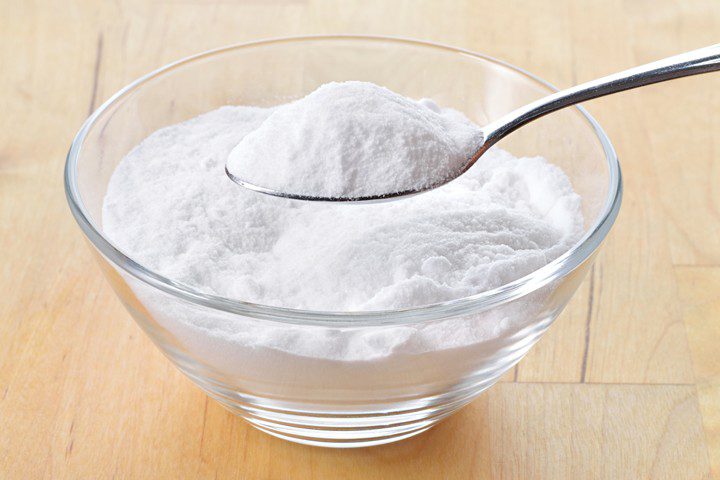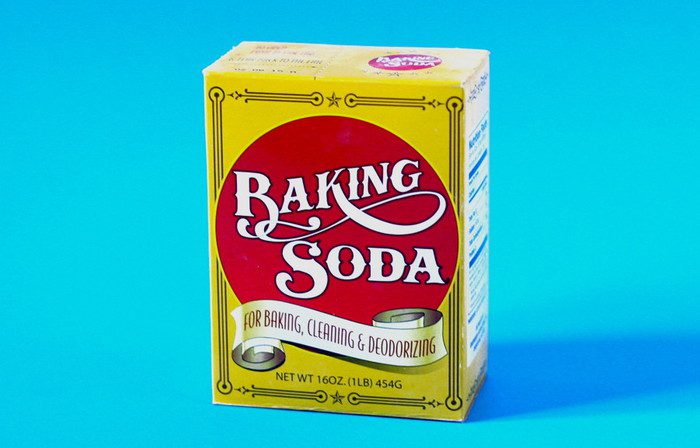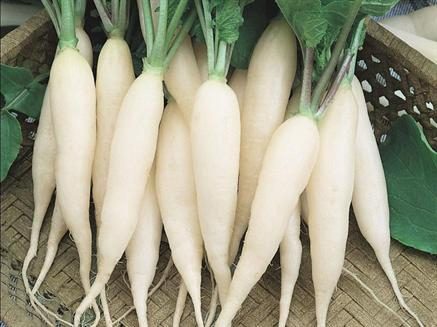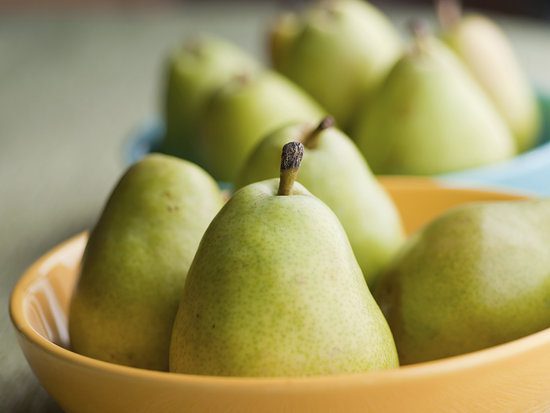15 Oct The Many Gifts Of Baking Soda

Hello and welcome to I-RAMA post 4 we would like to thank you all for all the support and love that we receive from all of you without it we won’t be here.
This week we are sharing information on Baking soda. I personally use Baking Soda for cleaning, beauty products, for our pets and so much more and as you will see in this post you can also enjoy the benefits of this wonderful product, please like and share that is what keeps our site going, thank you once again for your support from all of us at I-RAMA
We would like to remind you to use common sense when you use Baking Soda always consult your health practitioner when in doubt we are only sharing information from authorities in the matter but in no way we are prescribing.
Baking Soda
from: http://www.churchdwight.com
John Dwight and his brother in law DR Austin Church In 1846 founded the company Church and Dwight Co., Inc, the manufacturers of ARM & Hammer trademark, Baking Soda.
They used Trona, (Soda ash) out of the ground and they turned into Sodium Bicarbonate for the use of both inside and outside the house. Baking Soda is a staple in many homes for baking and cleaning purposes and nowadays for many other uses. It rates right up there with hydrogen peroxide and vinegar as one of the most inexpensive and safe tools around (you can buy an entire box of baking soda for about $1), so it makes sense to learn all you can about the many, many uses of baking soda.
Let’s look at Brief Baking Soda History
In its natural form, baking soda is known as Nahcolite, which is part of the natural mineral Natron. Natron, which contains large amounts of sodium bicarbonate, has been used since ancient times. For instance, the Egyptians used natron as a soap for cleansing purposes. Later, reports throughout history suggest that many civilizations used forms of baking soda in the kitchen when making bread and other foods that required rising.
Dr. Austin Church and John Dwight began to manufacture and sell the compound we know as baking soda today. By the early 1860s, baking soda was featured in published cookbooks across the board, and in the 1930s was widely advertised as a “proven medicinal agent.” In 1972, the idea to keep a box of baking soda in your fridge to keep food fresh was born, and it really caught on in most households.
Baking soda was popularized by Arm & Hammer more than 150 years ago, and while many are aware of its versatile qualities for cooking and household use, few people realize that baking soda also has potent alternative medicinal properties.
3500 BC: The Ancient Egyptians use natron (mainly comprised of sodium carbonate) soap-like as a cleaning agent. They also use it to on mummies.
1843: TheBrtish Chemist Alfred Bird, makes the first version of baking powder to help out his wife, who was allergic to yeast products.
1846: Is when Arm & Hammer brand is created. The well-known logo that exists today represents Vulcan, the Roman god of fire and metalworking –is not introduced until 1867.
1924: The beginning of its use to treat & prevent the cold & flu virus.
1927: National magazines like Good Housekeeping and McCall’s begin promoting the use of baking soda at home.
1970: Arm & Hammer is the sole sponsor of the very first Earth Day. Baking soda gains attention as an eco-friendly alternative to chemical cleaners.
1972: A new use for baking soda receives widespread recognition – Americans begin placing a box of baking soda in their refrigerators to keep food fresh and the refrigerator free of unpleasant odors.
1986: To celebrate the Statue of Liberty’s 100th birthday, its inner copper walls are cleaned and restored with baking soda, which removed 99 years of grime and left the copper undamaged and fully clean.
2000: Kids use Baking Soda for school science experiments at all the schools.
What Is Baking Soda?
Baking soda is known as sodium bicarbonate, a natural substance that one of the many attributes is to help regulate pH. This action regulates PH by keeping a substance from becoming too acidic or too alkaline, which is of great importance in maintaining health. When baking soda contacts another substance, it naturally neutralizes the pH of the subject and prevents further imbalance and buffers the pH. This action of baking soda is able to neutralize odors, remove stains, detox the body and eliminate an infection.
While baking soda is a particularly effective in helping your overall wellness, it should also be mentioned that the substance can deplete the body of essential vitamins and minerals, particularly B vitamins, folic acid, and chromium when is overused, like anything less is more is always good to use common sense. Baking soda is best used for short periods of time in conjunction with other nutritional supports to prevent nutritional imbalances and always consult your health practitioner.
The Difference Between Baking Soda and Baking Powder
https://youtu.be/dusVNJ3gLvI
Here is where the subject can get a little confusing–since baking soda and baking powder are both white, powdery substances that we use in baking. But there IS a difference:
Baking soda is 100% sodium bicarbonate. It comes from soda ash, which can also be made synthetically or collected from natural sources. For the most part, recipes that call for baking soda also require some sort of acid, which helps to increase the leavening process and helps remove the slightly bitter taste that baking soda sometimes contributes to recipes.
On the other hand, Baking powder does contain some sodium bicarbonate and also has other ingredients that act as acidifying agents. As a result, this means that you don’t have to add extra acid to your recipes to get the leavening action. The acidifying agents can come in the form of cream of tartar or an aluminum-based acid which is best to avoid. I always make sure that the products are aluminum free.
 Benefits of Sodium Bicarbonate
Benefits of Sodium Bicarbonate
Sodium Bicarbonate has a natural pH neutralizing effects, baking soda serves a variety of purposes also. The compound is effective in reducing pain due to the fact that pain is acid, eliminating infection also acid and treating inflammation once again acid.
For these reasons, sodium bicarbonate is used to treat a variety of challenges. Like acne, allergies, canker sores, fungus infections body odors bacterial infections and more can successfully be helped using a baking soda regimen. Burns, bee stings, and cysts also respond well to the application of the product. Other conditions including fatigue, cough, congestion, flatulence, gout, gum deterioration and others disorders can also have a great benefit from the use of baking soda.
Even do baking soda is most likely an available product in most households, few individuals are aware of how many different ways the product can be used. Baking soda is a very effective helper for so many conditions and can be used to detox the body and eliminate toxicity safely, being the fact that most of the unhealthy issues are acid, and Baking Soda is Alkaline it creates a balance.
 The fact that Baking soda is actually a naturally occurring, very versatile substance aside from being environment-friendly safe and is inexpensive is something to consider when having at the house. Not only is Baking Soda nontoxic but it is actually a food. That differentiates it from the commercial household products, it is safe around children and pets also.
The fact that Baking soda is actually a naturally occurring, very versatile substance aside from being environment-friendly safe and is inexpensive is something to consider when having at the house. Not only is Baking Soda nontoxic but it is actually a food. That differentiates it from the commercial household products, it is safe around children and pets also.
Here we are sharing its use in the kitchen, bathroom, laundry, garage and so much more.
Some of the guidelines of Baking Soda
Here are three different uses
In a solution
In a paste
You will be amazed at what Baking soda gifts are
Used directly:
You can use Baking Soda by sprinkling it directly onto something or a sponge whatever you decide is a desirable applicator for you. So let’s be clear the in this case Baking Soda is used straight from the box as a powder form and not diluted with any other substance.
As a solution form:
A preferable ratio is 4 tablespoons of Baking Soda per each quart of warm water. this can be as diluted as you desire requires for your particular use.
Used as a paste:
To accomplish this process you have to add the desired amount of water for your purpose to mix either a soft fluid paste or a more dry form here is up to what you need the paste for.
 Coconut Oil & Baking Soda Face Wash
Coconut Oil & Baking Soda Face Wash
1/2 Teaspoon of backing soda
1 Teaspoon of coconut oil
Mix together and apply to a dampened face, massage in circular motions, and remove the mixture off your face with a warm, wet washcloth.

Ways to Use Baking Soda
from http://articles.mercola.com
Natural Deodorant
If you want to avoid the parabens and aluminum found in many deodorants and antiperspirants, try a pinch of baking soda mixed with water instead. This simple paste makes an effective and simple natural deodorant. You can also simply brush some dry baking soda under your arms.

Coconut and organic coconut oil in a glass jar on white background.
Insect Bites and Poison Ivy
Apply a paste made of baking soda and water to insect bites to help relieve itching. You can also try rubbing the dry powder onto your skin. This is also effective for itchy rashes and poison ivy. Baking soda helps to relieve minor skin irritation and itching by neutralizing toxins and irritants on your skin’s surface.
Heartburn, Indigestion, and Ulcer Pain
Most over-the-counter antacids contain some form of bicarbonate. Baking soda works by immediately neutralizing stomach acid, helping to relieve heartburn, indigestion and even ulcer pain. I have personally recommended this to many, including family members, and have been surprised how remarkably effective it is.
Dosing is typically ½ teaspoon fully dissolved in a half a glass of water, taken every two hours (do not take more than seven ½ teaspoons in 24 hours, or three ½ teaspoons if you’re over 60).
This should only be used as an occasional (not chronic) treatment, however, and be careful not to consume excessive amounts, which can cause serious electrolyte and acid/base imbalances.
Foot Soak and Exfoliator
Add three tablespoons of baking soda to a tub of warm water for an invigorating foot soak. You can scrub your feet with a baking soda paste for additional exfoliation. A paste made from three parts of baking soda combined with one part water can be used as an exfoliator for your face and body, too.
Relaxing Soak
Baking soda and apple cider make a wonderful spa-like bath for soaking. It also cleans the tub and the drain, as a bonus!
Hand Cleanser
Mix three parts baking soda with one part of water to make a natural hand cleanser that will scrub away dirt and neutralize odors.
Splinter removal
Add a tablespoon of baking soda to a small glass of water, then soak the affected area twice a day. Many splinters will come out on their own after a couple of days using this treatment.
Sunburn Remedy
Add ½ cup of baking soda to lukewarm bathwater, then soak in the tub for natural relief. When you get out, let your skin air dry, rather than toweling off the excess baking soda, for extra relief. You can also add a mixture of baking soda and water to a cool compress and apply it to the sunburn directly.
Enhanced Sports Performance
Distance runners have long engaged in a practice known as “soda doping” — or taking baking soda capsules — before races to enhance performance, a measure that’s thought to work similarly to carbohydrate loading. It’s also been shown to improve speed among swimmers. While I don’t suggest you try this at home, it’s another example of baking soda benefits. Essentially, sodium bicarbonate is an alkali substance that increases the pH of the blood. This seems to reduce and offset the acidity produced in the muscles during intense, anaerobic exercise that produces lactic acid most quickly, such as fast running or swimming.”
Help Your Hair
Start by mixing 1 part baking soda with 3 parts water. With shoulder length hair mix about 2 to 3 tablespoon of baking soda with 3 times that amount of water in a small squeeze bottle. You can adjust this depending on your hair length. Apply the baking soda and water mixture to dry or wet hair by starting at the roots and working to the ends.
Freshen Your Mouth
Put one teaspoon in half a glass of water, swish, spit and rinse. Odors are neutralized, not just covered up.
Soak Oral Appliance
Soak oral appliances, like retainers, mouthpieces and dentures, in a solution of 2 teaspoons baking soda dissolved in a glass or small bowl of warm water. The baking soda loosens food particles and neutralizes odors to keep appliances fresh. You can also brush appliances clean using baking soda.
Make a Hand Cleanser and Softener
Skip harsh soaps and gently scrub away ground-in dirt and neutralize odors on hands with a paste of 3 parts baking soda to 1 part water, or 3 parts baking soda to gentle liquid hand soap. Then rinse clean.
Clean Brushes and Combs
For lustrous hair with more shine, keep brushes and combs clean. Remove natural oil build-up and hair product residue by soaking combs and brushes in a solution of 1 teaspoon of baking soda in a small basin of warm water. Rinse and allow to dry.
Make a Bath Soak
Add 1/2 cup of baking soda to your bath to neutralize acids on the skin and help wash away oil and perspiration, it also makes your skin feel very soft.
Soothe Your Feet
Dissolve 3 tablespoons of baking soda in a tub of warm water and soak feet. Gently scrub.
Make a Surface Soft Scrub
For safe, effective cleaning of bathroom tubs, tile and sinks–even fiberglass and glossy tiles–sprinkle baking soda lightly on a clean damp sponge and scrub as usual. Rinse thoroughly and wipe dry. For extra cleaning power, make a paste with baking soda, course salt and liquid dish soap—let it sit then scour off.
Handwash Dishes and Pots & Pans
Add 2 heaping tablespoons baking soda (along with your regular dish detergent) to the dish water to help cut grease and foods left on dishes, pots and pans. For cooked-on foods, let them soak in the baking soda and detergent with water first, then use dry baking soda on a clean damp sponge or cloth as a scratchless scouring powder.
Freshen Sponges
Soak stale-smelling sponges in a strong baking soda solution to get rid of the mess (4 tablespoons of baking soda dissolved in 1 quart of warm water).
Polish Silver Flatware
Use a baking soda paste made with 3 parts baking soda to 1 part water. Rub onto the silver with a clean cloth or sponge. Rinse thoroughly and dry for shining sterling and silver-plate serving pieces.
Clean Coffee and Tea Pots
Remove coffee and tea stains and eliminate bitter off-tastes by washing mugs and coffee makers in a solution of 1/4 cup baking soda in 1 quart of warm water. For stubborn stains, try soaking overnight in the baking soda solution and detergent or scrubbing with baking soda on a clean damp sponge.
Clean the Oven
Sprinkle baking soda onto the bottom of the oven. Spray with water to dampen the baking soda. Let sit overnight. In the morning, scrub, scoop the baking soda and grime out with a sponge, or vacuum, and rinse.
Clean Floors
Remove dirt and grime (without unwanted scratch marks) from no wax and tile floors using 1/2 cup baking soda in a bucket of warm water–mop and rinse clean for a sparkling floor. For scuff marks, use baking soda on a clean damp sponge, then rinse.
Clean Furniture
You can make a homemade lemon furniture polish, or you can clean and remove marks (even crayon) from walls and painted furniture by applying baking soda to a damp sponge and rubbing lightly. Wipe off with a clean, dry cloth.
Clean Shower Curtains
Clean and deodorize your vinyl shower curtain by sprinkling baking soda directly on a clean damp sponge or brush. Scrub the shower curtain and rinse clean. Hang it up to dry.
Boost Your Liquid Laundry Detergent
Give your laundry a boost by adding 1/2 cup of baking soda to your laundry to make liquid detergent work harder. A better balance of pH in the wash gets clothes cleaner, fresher and brighter.
Gently Clean Baby Clothes
Baby skin requires the most gentle of cleansers, which are increasingly available, but odor and stain fighters are often harsh. For tough stains add 1/2 cup of baking soda to your liquid laundry detergent, or a 1/2 cup in the rinse cycle for deodorization.
Clean Cloth Diapers
Dissolve 1/2 cup of baking soda in 2 quarts of water and soak diapers thoroughly.
Clean and Freshen Sports Gear
Use a baking soda solution (4 tablespoons baking soda in 1 quart warm water) to clean and deodorize smelly sports equipment. Sprinkle baking soda into golf bags and gym bags to deodorize, clean golf irons (without scratching them!) with a baking soda paste (3 parts baking soda to 1 part water) and a brush. Rinse thoroughly.
Remove Oil and Grease Stains
Use baking soda to clean up light-duty oil and grease spills on your garage floor or in your driveway. Sprinkle baking soda on the spot and scrub with a wet brush.
Clean Batteries
Baking soda can be used to neutralize battery acid corrosion on cars, mowers, etc. because its a mild alkali. Be sure to disconnect the battery terminals before cleaning. Make a paste of 3 parts baking soda to 1 part water, apply with a damp cloth to scrub corrosion from the battery terminal. After cleaning and re-connecting the terminals, wipe them with petroleum jelly to prevent future corrosion. Please be careful when working around a battery–they contain a strong acid.
Clean Cars
Use baking soda to clean your car lights, chrome, windows, tires, vinyl seats and floor mats without worrying about unwanted scratch marks. Use a baking soda solution of 1/4 cup baking soda in 1 quart of warm water. Apply with a sponge or soft cloth to remove road grime, tree sap, bugs and tar. For stubborn stains, use baking soda sprinkled on a damp sponge or soft brush.
Deodorize Your Refrigerator
Place an open box in the back of the fridge to neutralize odors.
Deodorize the Cutting Board
Sprinkle the cutting board with baking soda, scrub, rinse. For how to more thoroughly clean your cutting board.
Deodorize Trashcans
Sprinkle baking soda on the bottom of your trashcan to keep stinky trash smells at bay.
Deodorize Recyclables
Sprinkle baking soda on top as you add to the container. Also, clean your recyclable container periodically by sprinkling baking soda on a damp sponge. Wipe clean and rinse.
Deodorize Drains
To deodorize your sink and tub drains, and keep lingering odors from resurfacing, pour 1/2 cup of baking soda down the drain while running warm tap water–it will neutralize both acid and basic odors for a fresh drain.
Deodorize Lunch Boxes
Between uses, place a spill-proof box of baking soda in everyone’s lunch box to absorb lingering odors.
Remove Odor From Carpets
Liberally sprinkle baking soda on the carpet. Let set overnight, or as long as possible (the longer it sets the better it works). Sweep up the larger amounts of baking soda, and vacuum up the rest.
Remove Odor From Vacuum Cleaners
By using the method above for carpets, you will also deodorize your vacuum cleaner.
Freshen Closets
Place a box on the shelf to keep the closet smelling fresh.
Deodorizing Cars
Odors settle into car upholstery and carpet, so each time you step in and sit down, they are released into the air all over again. Eliminate these odors by sprinkling baking soda directly on fabric car seats and carpets. Wait 15 minutes (or longer for strong odors) and vacuum up the baking soda.
Deodorize the Cat Box
Cover the bottom of the pan with baking soda, then fill as usual with litter. To freshen between changes, sprinkle baking soda on top of the litter after a thorough cleaning.
Deodorize Pet Bedding
Eliminate odors from your pets bedding by sprinkling liberally with baking soda, wait 15 minutes (or longer for stronger odors), then vacuum up.
Deodorize Sneakers
Keep odors from spreading in smelly sneakers by shaking baking soda into them when not in use. Shake out before wearing. When they’re no longer wearable
Freshen Linens
Add 1/2 cup of baking soda to the rinse cycle for fresher sheets and towels.
Deodorize Your Wash
Gym clothes of other odoriferous clothing can be neutralized with a 1/2 cup of baking soda in the rinse cycle.
Freshen Stuffed Animals
Keep favorite cuddly toys fresh with a dry shower of baking soda. Sprinkle baking soda on and let it sit for 15 minutes before brushing off.
Camping Help-all
Baking soda is a must-have for your next camping trip. Its a dish washer, pot scrubber, hand cleanser, deodorant, toothpaste, fire extinguisher and many other uses.
Septic Care
Regular use of baking soda in your drains can help keep your septic system flowing freely. One cup of baking soda per week will help maintain a favorable pH in your septic tank.
Fruit and Vegetable Scrub
Baking soda is the food safe way to clean dirt and residue off fresh fruit and vegetables. Just sprinkle a little on a clean damp sponge, scrub and rinse.
Extinguish Fires
Baking soda can help in the initial handling of minor grease or electrical kitchen fires, because when baking soda is heated, it gives off carbon dioxide, which helps to smother the flames. For small cooking fires (frying pans, broilers, ovens, grills), turn off the gas or electricity if you can safely do so. Stand back and throw handfuls of baking soda at the base of the flame to help put out the fire–and call the Fire Department just to be safe.













